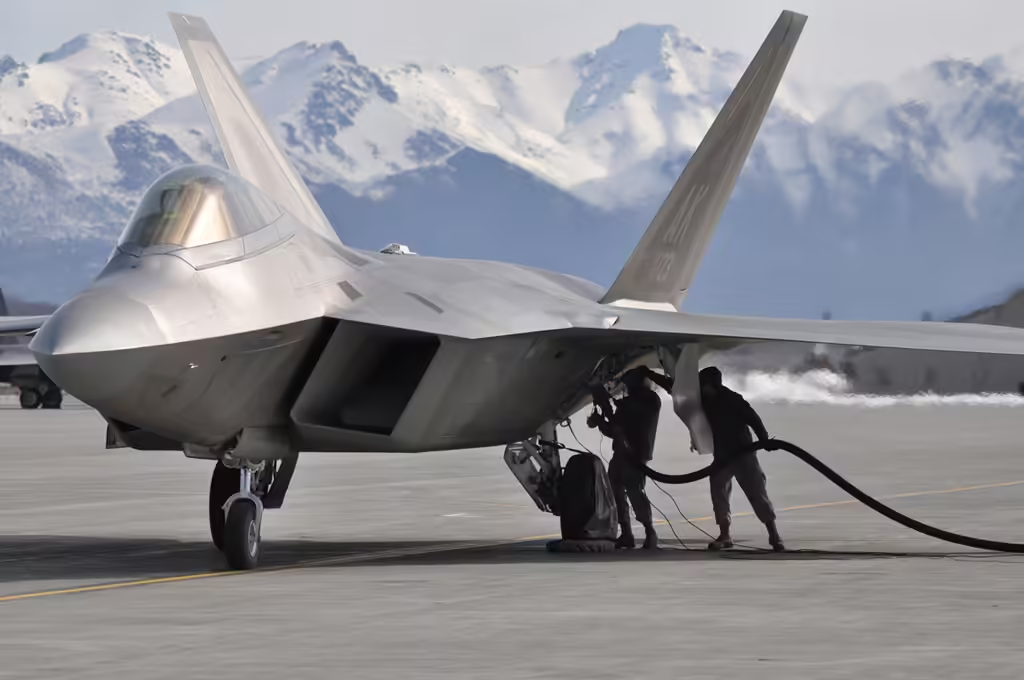
Table of Contents
Summary and Key Points: Despite ending production in 2011 after only 195 units, the F-22 Raptor—the first operational fifth-generation fighter in history—remains one of the world’s best air superiority fighters.
- The F-22 was a high-tech stealth aircraft developed as part of the Advanced Strategic Fighter Program during the Cold War.
However, its production was discontinued due to post-Cold War budget constraints.
-The F-22 will eventually be phased out as the US Air Force focuses on the Next Generation Air Dominance (NGAD) program.
-Before it retires, airplane fans should take the opportunity to see this technological marvel at an airshow.
F-22 Raptor: The Rise and Fall of a Fifth-Generation Marvel
The F-22 Raptor is considered the future of military aviation. The F-22, the world’s first operational fifth-generation fighter, was the most sophisticated and perhaps the best air superiority aircraft ever built.
However, the F-22 is already being phased out; When production of the jet ceased in 2011, only 195 aircraft had been built, indicating that the US Air Force had an adequate, if relatively young, fighter fleet.
Post-Cold War Sequestration for F-22
In the late 1980s, during the Cold War, the F-22 was first developed as an Advanced Tactical Fighter program (ATF).
At the height of the Cold War, the US did not hesitate to allocate significant funds to defense initiatives. The Americans were particularly concerned about aerospace development as the Soviet Union had demonstrated that they could build a capable aircraft as both the Sukhoi and Mikoyan produced superior airframes.
Never content to stand still, the Americans embarked on an ATF program to dramatically push the boundaries, resulting in the first fifth-generation fighter jet in history.
Obviously, pushing the limits and creating an entirely new class of aircraft wasn’t cheap. However, during the Cold War, when money was not a concern, taxpayers were prepared to pay for aircraft never seen before.
Pilot and engineer Patrick Bindner described the F-22 as “a foray into the future where no one has gone before.” Although it’s almost commonplace now, in terms of technology that already existed at Lockheed Martin and the USAF – which were learning how to do it – as they went down that path – it was on par with Star Wars gear. Made using materials and engineering where money was no object, it was a piece of extreme exoticism. Although it looked like an airplane, it was the first fully functional stealth fighter.
The end product was an aircraft that thirty years later is “unsurpassed in its combat niche” and “still fully relevant to its design objectives.”
The F-22 is still “unmatched in its combat niche”, so given how far ahead of its time it was, why was funding withdrawn and production halted after less than 200 aircraft were built?
The end of the Cold War led to the takeover of the US Air Force in the 2010s, which changed the calculation of the military budget. The F-22 failed due to budgetary constraints. Production was stopped. The F-22 has not been built in 13 years and will not be built again. Aircraft production has ended forever, and in time, the jet will be phased out of active duty service in favor of the still being developed Next Generation Air Dominance (NGAD) sixth-generation fighter.

Thankfully, the F-22 continues to fly and exhibits an amazing range of technical capabilities. Perhaps most notable are the F-22’s stealth characteristics. Extensive studies are needed to preserve the aircraft’s speed and maneuverability while reducing the radar cross section (RCS) of the F-22.
According to Laura Cleary, “The F-22 Raptor uses advanced composite materials, such as carbon fiber composites, which are light in weight yet strong, to achieve its stealth capabilities.” “These materials help improve the overall performance of the aircraft, increase its maneuverability and reduce its weight.”

About the Author: Harrison Kass
The author of more than 1,000 articles on international politics, Harrison Kass specializes in writing on the military and national security. Harrison is a pilot, lawyer, guitarist, and former minor league hockey player. He joined the US Air Force as a trainee pilot but was later medically discharged. Harrison holds an MA from New York University, a JD from the University of Oregon, and a BA from Lake Forest College.
READ | The Nimitz-class aircraft carrier Stennis has been decommissioned for 5 years.
READ | How the F-117 stealth fighter representing American air power was shot down


2 thoughts on “A near-fatal flaw in the F-22 stealth fighter that cannot be fixed”